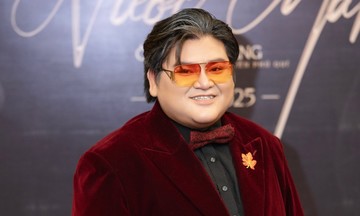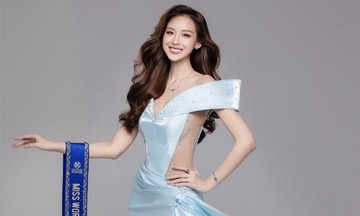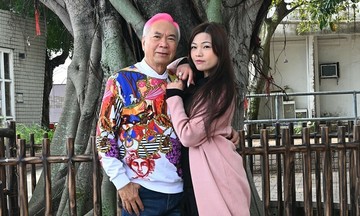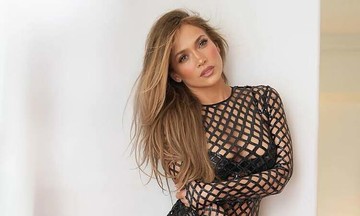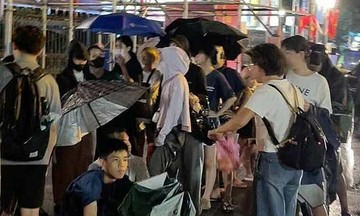When Thierry Mugler introduced his Robot Couture suit made of metal and transparent plastic in 1995, he not only created a fashion icon but also sparked a question: could machines become artistic subjects on the runway?
Four years later, Alexander McQueen offered an answer in his No. 13 show. He used two industrial robotic arms to spray paint directly onto Shalom Harlow's white dress. The supermodel posed on a rotating platform, performing a dance both mechanical and emotional. According to Vogue, this moment became one of the most iconic performances in global fashion history.
From 2000 to 2010, designers like Hussein Chalayan and Chanel continued to push the boundaries between fashion and technology, showcasing collections featuring drones, stormtrooper robots, and remote-controlled transforming garments. However, most of the robots' appearances on the runway during this period were still heavily symbolic and visually effective, rather than a true collaboration between humans and machines.
From the early 2020s to the present, robots are considered to be "alive" on the runway. Boston Dynamic's robot dog, Spot, caused a sensation at Coperni's Fall/Winter 2023 show at Paris Fashion Week. Co-founders Sebastien Meyer and Arnaud Vaillant told Vogue, "Our message is one of optimism: humans and technology can coexist harmoniously." At Schiaparelli's Spring/Summer 2024 Haute Couture show in Paris, supermodel Maggie Maurer carried an AI-inspired baby robot adorned with crystals, computer circuit boards, electrical components, and microchips.
March of this year marked a significant shift when robots transitioned from stage props to models' "colleagues" on the runway. Brands have begun to view robots as creative partners, models, or narrators. This creates dynamic interactions between machines and humans, eliminating the one-dimensional performance phase of robots from earlier times.
At Milan Fashion Week, designer Giuseppe di Morabito's show made waves with its opening featuring Ameca, the world's most advanced humanoid AI. Vogue described how "Ameca woke up, moved expressively, and read philosophical excerpts from Thomas Carlyle's Sartor Resartus, before model Yasmin Wijnaldum appeared and interacted with the robot in a philosophical catwalk about the future of fashion."
Simultaneously, at Shanghai Fashion Week, the brand NMTG brought Unitree G1, a 127 cm tall humanoid robot, along with robot dogs onto the stage. G1, with 43 motor joints controlled via Machine Learning, strode alongside models in a show inspired by cyberpunk and Evenki ethnic culture.
According to Fashionating World, the development of robots on the runway signals a long-term revolution in the fashion industry. According to forecasts from WGSN and Fashionating World, in the next 5-10 years, fashion houses will not only use robots for performances but will integrate them more deeply into the creative process and customer engagement.
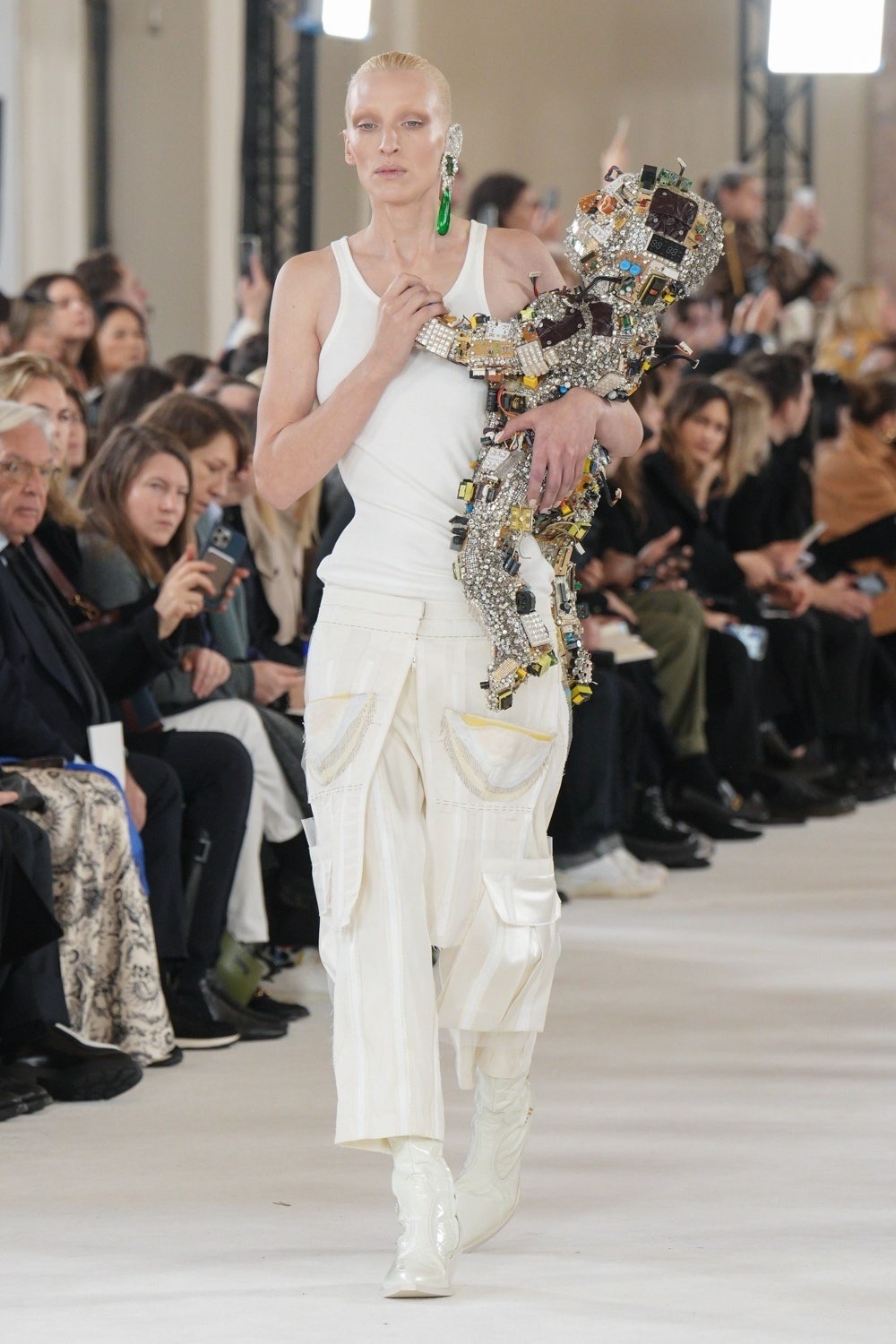 |
As the heroine Ellen Ripley from the movie "Alien", model Maggie Maurer holds a doll adorned with Swarovski crystals and chips, circuit boards at the Schiaparelli show. Photo: Gorunway |
Phygital (physical-digital) runways are expected to thrive. Future shows will combine real models, robots, and digital avatars, using AR/VR technology to create multi-dimensional and personalized show experiences.
According to Vogue, robots may become brand ambassadors. Humanoids like Ameca can be programmed to interact directly with customers at flagship stores, acting as AI models or mobile brand ambassadors.
Trendsetting brands like Coperni, Giuseppe di Morabito, and NMTG aren't simply seeking novelty for attention. They are experimenting with a new method of storytelling, where the runway is a stage for showcasing technological thinking and data-driven creativity.
As robots become increasingly present in public, fashion for robots may emerge. Designers will create collections specifically for robots, not only to celebrate aesthetics but also to conceal components and sensors, transforming them into brand symbols.
Robots will become more deeply involved in the design process, becoming valuable human partners, from sketching and prototyping to material testing through highly automated processes. This opens up the potential for real-time fashion personalization right on the runway.
 |
Robots can participate in production or open up the need to design clothes for themselves in the future. Photo: Pinterest |
According to AP, in the strategy of sustainable fashion development, using robots to simulate real models in test sessions can help reduce the production of physical samples, limiting material waste. Creative studios are researching and developing "Digital Twin Robots" - robots that simulate models' body parameters to try on clothes in real-time, minimizing environmental impact from the design stage.
As the fashion industry is under pressure to transition to a green production model and personalize customer experiences, robots are seen as a strategic key for brands to optimize their supply chains, from design to presentation and marketing.
Fashion today is not just about fabrics; it's also a stage for technology. The collaboration between fashion designers, robot engineers, performers, and AI programmers will redefine the runway experience, turning it into an intersection between reality and the future. In the near future, the line between humans and machines will no longer be clearly divided on the runway. They will be colleagues, creative artists alongside humans.
Y Ly




